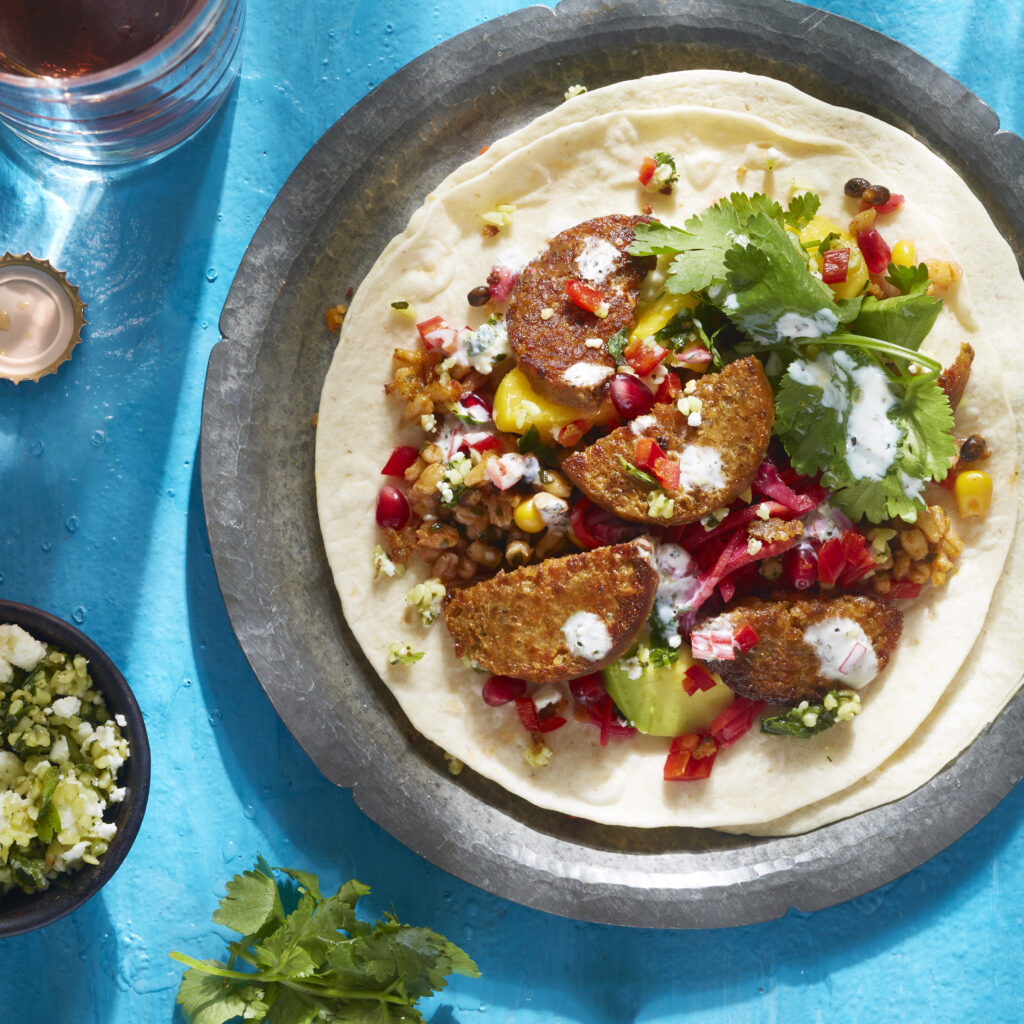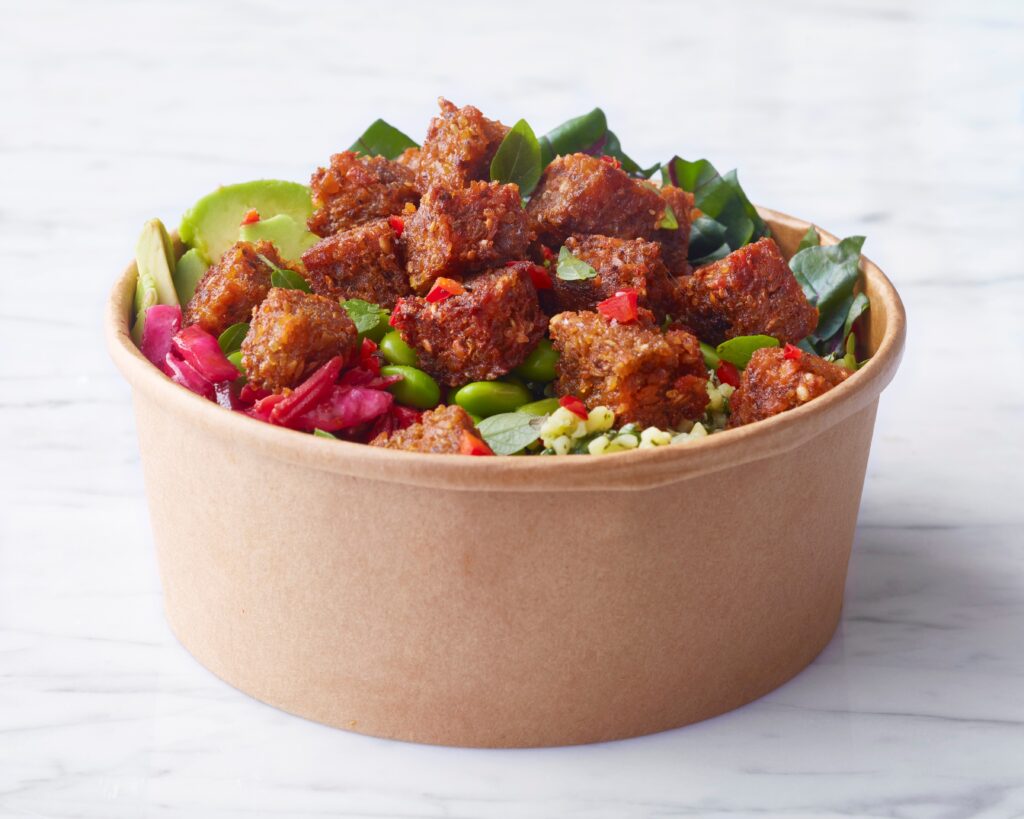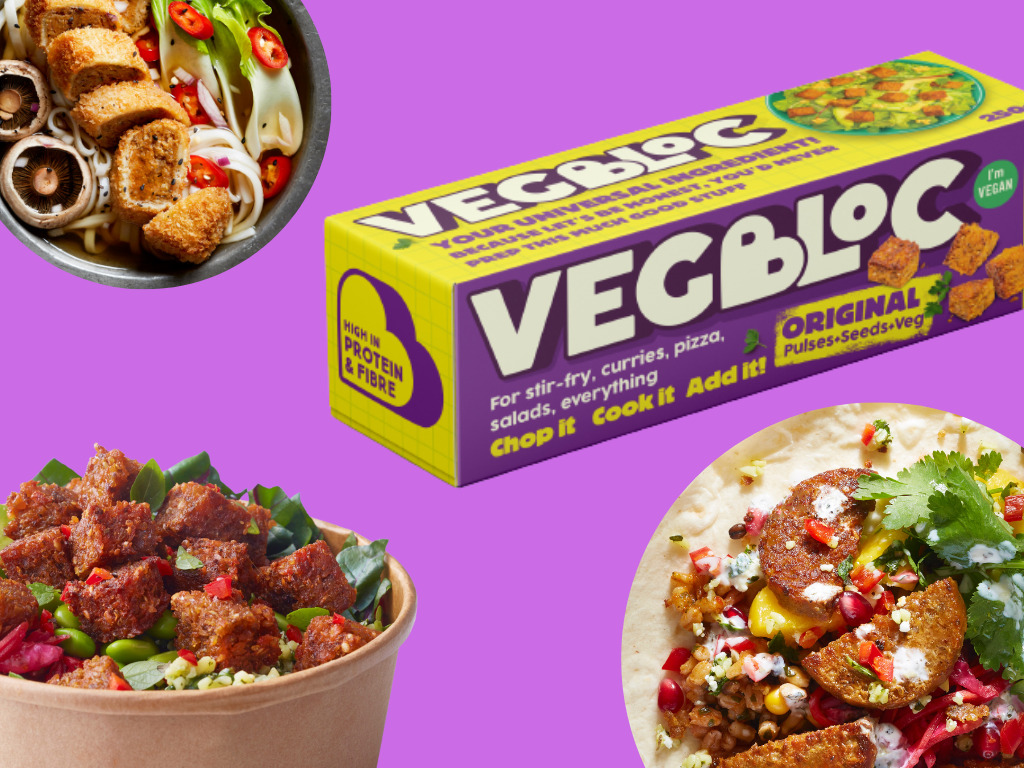Protein Reinvented: Vegbloc’s Fresh and Healthy Approach Targets The Time-Strapped and Planet-Conscious
6 Mins Read
It’s not tofu or tempeh, and don’t call it plant-based meat. Newcomer-on-the-shelf Vegbloc looks to disrupt the protein on the plate of busy, climate-conscious folks who value health, taste and convenience.
When was the last time you put quinoa in your ramen? Or red lentils on your pizza? Or split peas in your stir-fry? Vegbloc promises to let you do all of that, and more. Designed to be a meat replacement – not imitation – this new kind of plant-based ingredient implores you to open up and expand your culinary imagination.
The thing about Vegbloc is that it isn’t interested in tasting like meat at all. But it’s also not a traditional protein source like tofu or tempeh – it’s its own thing. It’s an entirely new product format, and it’s exciting for people who want to experiment in their kitchens.
“We saw a gap for a convenient product that was nutritious enough to get picked up by health-minded shoppers, had an ingredient list that reassured the sceptical, and made it easy for people to cook with plants in a whole new way,” Vegbloc co-founder Simon Day tells Green Queen. The company describes it as a “high-protein, high-fibre, all-natural universal ingredient” made from vegetables, seeds and pulses.
The Brit was a marketing partner at Vivera and co-created plant-based meat brand Squeaky Bean in 2019. He also co-founded fellow British startup The Cultured Collective last year, and has made investments in sustainable food brands like Bold Bean Co and The Pack.
“It’s an innovative concept, but we’ve found it’s one that strikes almost everyone as a no-brainer,” Day says about Vegbloc. “The product format is new, but the ingredients and process are based firmly in food heritage rather than novel science.”
Those ingredients? Quinoa, red lentils, split peas, flax and chia seeds, onion, sweet potato, mushroom, garlic, gram flour, rosemary, nutritional yeast, smoked paprika, mushroom powder, coriander, black pepper and salt. All wrapped up in a cylindrical sausage-like 250g (veg)block that’s cooked in the pack, eschewing the need for preservatives and achieving what Day calls a “decent shelf life” (not an “artificially long” one). He also confirms it can be frozen, should you want to extend its lifespan.
It is, in all senses of the term, clean label. A genuinely whole-food ingredient. And Big Meat is sure to get mighty annoyed – the industry loves knocking the long ingredient lists of plant-based meat replacements and has waged a somewhat successful campaign, especially in the US, aimed at convincing consumers that these products are ultra-processed.

A new way to cook
Another thing that would usually tick Big Meat off is that it doesn’t taste like meat. The old-protein lobby would be all over that, mocking it for its seemingly inferior flavour and texture to animal-based food. But then, it would be missing the point – because it doesn’t taste like tofu or tempeh either.
“The texture is not homogenous,” says Day. “As you eat Vegbloc, you recognise that you are eating quinoa, lentils, split peas and so on… It simply tastes and eats like the combination of wonderful plants it’s made from.”
And what is that taste like, I ask? “A delicious savoury flavour that deepens when it is browned through cooking,” Day answers. “It’s lightly flavoured with herbs and spices, but the umami hit really comes from the lentils and mushrooms.”
He adds that the British brand deliberately avoided over-flavouring the Original Vegbloc, because “we know so many people want a versatile ingredient that can slot into numerous dishes they already cook”. But for the ultra-curious, there are a couple of new flavours on the horizon that add a new dimension while retaining that valuable versatility.
Does Vegbloc also pass Big Meat’s protein test? Without revealing exact amounts, Day confirms that while Vegbloc is high in protein, it isn’t as high as some ingredients. But it does contain more fibre than tofu and tempeh, with an added hit of omega-3 thanks to the chia and flax.
Vegloc’s emergence comes at a pivotal point for plant protein. One of the industry’s giants, Beyond Meat, has seen sales decline by almost a third, while numerous brands have ceased operations, or come close to it. How do you pitch to a consumer base that has shown faltering faith in this sector over the last year?
“We are targeting people who are interested in their health, looking for whole food options, and don’t have the time to prepare a dozen plants from scratch at every meal,” says Day, outlining the importance of the ingredient’s quick-to-cook nature in an increasingly short-of-time consumer world. “We want people to drop it in their regular dishes – whether they contain meat or not – for a boost of nutrition, flavour and texture.”

Adaptability is key
Vegbloc has been granted a Carbon Rating A by carbon calculator My Emissions (in which Day is an angel investor). It aligns with greenhouse gas protocols and covers a product’s life cycle, including scope 3 packaging and transport emissions. This puts the new plant protein in the same bracket as tofu and, as Day happily points out, “obviously way ahead of mass-produced animal proteins”. A landmark study by Nature Food in July proved the environmental supremacy of plant-based food – vegan diets can cut emissions by 70% compared to meat-rich ones.
Day remains coy over the sourcing of Vegbloc’s ingredients, saying it’s “likely to change as we scale” – but hints at an adaptable strategy to keep its climate footprint down. “What’s exciting about the future of Vegbloc and our concept of a convenient ingredient made from a variety of plants is that there are so many amazing plants out there to use,” he explains. “We could use different recipes for different markets [and] target consumers in order to optimise for local growing capability, tastes and nutritional requirements.”
Vegbloc is planning for a January 2024 retail launch in its home market in the UK, before expanding into foodservice. While the product has garnered international interest, Day says the brand wants to prove the concept at home first to build the business sustainably.
Vegbloc feels like such a novel food ingredient, it throws out all convention. And you can’t predict its trajectory based on consumer surveys on plant proteins, since most automatically refer to alt-meat – like this Mintel report that found more than half of consumers want plant-based protein to taste indistinguishable from meat.
I ask Day whether he fears this ingredient is almost too unique to work. “We know we have a job to do to make it incredibly clear what Vegblock is and how to use it,” he admits. “But the huge groundswell of support and excitement we’ve received pre-launch has reassured us that we’re on to something.”
Is Vegbloc a round peg in the square alt-protein hole? Maybe, but that just might be exactly why it could work.



